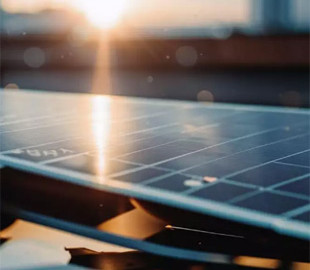
The weight of the new panel is only 665 grams per square meter, and its efficiency reaches 22.2%.
Softbank announced that it has completed the development of ultra-light and ultra-thin silicon-based heterojunction solar cells. These batteries are designed for use on flying platforms in the stratosphere, which can replace cell towers in remote regions of the world. The weight of the new panel is only 665 grams per square meter, and its efficiency reaches 22.2%. This result is an important step towards achieving the company's goal – reduce the weight of the panel to 500 grams per square meter.
Stratospheric communications platforms, known as HAPS (high-altitude pseudo-satellites), are often airships. Flexible solar cells will be installed on the inclined parts of the body of these devices. It is necessary that these elements are light, highly efficient and affordable. That is why Softbank chose silicon as the main material. Although lightweight multilayer solar cells made of more expensive and efficient materials are used in the space industry, their cost is much higher, which makes the use of such technologies on Earth economically unprofitable.
200% Deposit Bonus up to €3,000 180% First Deposit Bonus up to $20,000Softbank's custom-designed flexible heterojunction solar cell, made by Chinese manufacturer LONGi and Japan's Fujipream Corporation, includes a protective sheet, photocell, sealant, and back protective sheet with thicknesses of 25 microns, 80 microns, 150 microns, and 50 microns, respectively. The photocells are connected to each other with a copper conductor 250 microns thick using low-temperature solder. The resulting 563 x 584 mm solar cell weighs only 218.5 grams. The area of one square meter of such a panel will be 665 grams. The efficiency of this panel was measured to be 22.2%.
LONGi and Fujipream continue to work on reducing the weight of solar cells for stratospheric aircraft. The next goal – reach the mark of 500 grams per square meter. If such panels begin to be mass-produced, they will find wide application in various fields, such as construction, the automotive industry, and other areas where it is important to use a free surface to collect solar energy.

